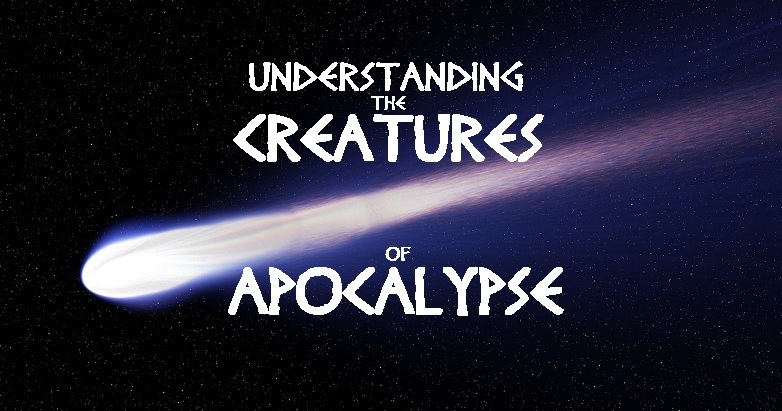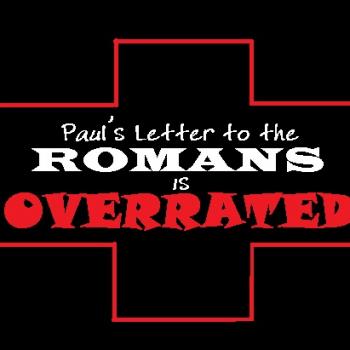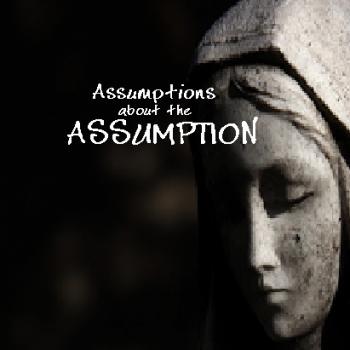
Instead of looking into the future or biblical past, understanding Apocalypse lies in knowing the night sky.
What is the book of Revelation all about? It seems so bizarre! Think about all those monsters and the weird imagery. Revelation is full of crazy stuff! Or maybe it isn’t crazy if you understand what the author meant. Understanding Apocalypse or Revelation is impossible without also knowing the Mediterranean sky of its author, John.
Here is a video presentation explaining the visions in the Book of Revelation—
Not Understanding Apocalypse
Ask many non-scholarly Christians, and they’ll tell you Revelation is a book predicting the future. By “future,” I mean events far in the future, way after the deaths of the author, John, and his audience. Conveniently, almost always about events in the time of the reader! So many think that the best way to understand Apocalypse is by reading it while watching the nightly news. Spurious facts strike again, folks!
But spurious assumptions aren’t the sole possession of non-scholarly fundamentalist types. There is plenty of spurious familiarity had by others reading Revelation, people more educated and sound in thinking. This group tends to read Revelation as a work of fiction filled with allegories and symbols. But they also are wrong. And if understanding Apocalypse is what you are after, you best drop these mistaken notions.
Instead, Revelation is a compilation of visions had by a first-century Jesus-group astral prophet named John. He didn’t make up his visions in some creative fictional work to bring hope to people. Also, John wasn’t the first-century Nostradamus—in fact, no biblical prophet was. John the Seer wrote an ancient astronomic report. That’s what Revelation is. In it, he stressed the need to resist deception and trust that the God of Israel controls the cosmos.
Understanding Apocalypse & the Ancient Sky of John
Many fundamentalists wrongly imagine that the best place to teach Revelation is against the backdrop of contemporary events. Nope. Folks like Scott Hahn think the book of Revelation is all about the Mass. Wrong again. Liturgy is not the best place to learn what John meant. Instead, the best place to teach the book of Revelation would be a planetarium calibrated to stellar precision of the first-century eastern Mediterranean night sky. Yeah, that would be a great place for understanding Apocalypse.
We should take the author John at his word. If he says he saw things in the sky, he believed that. John thought he went up into the sky. Therefore, let’s respectfully take him at his word. Because people from his culture regularly and routinely took sky journeys in a trance while keeping their feet planted on the ground.
Don’t have a Mediterranean first-century grasp of the night sky and how the cosmos worked? Well, then you can forget about understanding Revelation. Ultimately, you first need to understand how people like John the Seer imagined the universe.
Cosmology in Revelation
Hellenist authors like John (Revelation 1:9) and his Compiler (Revelation 1:1-3) knew that the earth was a sphere by the first century. But they imagined it as the stationary center of the universe. Unlike our cosmology, earth to them was motionless.
Our “heaven,” perfectly acceptable in catechisms and contemporary liturgy, is always misleading when found in our Bibles. Never forget that even the best translators are traitors. It is not really “Our Father who art in Heaven,” but “Our Patron who is on the sky-vault.” Why? Because our biblical ancestors believed that encapsulating the stationary central earth were a series of vaulted skies composed of either metallic mirror or crystal. So this sky-vault firmament was the physical boundary between the realm of God beyond it and the creatures below.
To get a picture of how they thought, look up the Farnese Sphere. Or take a look at an old armillary sphere.
Understanding Apocalypse & Its Sky-Persons
Ancient people didn’t know space like Carl Sagan. Instead, they believed that the sky teemed with life, indeed, living persons. To them, great spirits strode across the surface of the sky-vaults. Thus, the physical sky was populated by living other-than-human persons.
Henotheistic Israel was no different. They, too, believed in super-earthly sky-persons moving about the surfaces of the sky-vaults. These spirits were wielding significant influence on the earth and seas below. They were colossal titans older than humankind, existing from the first week of creation.
Glorious with honor, they formed constellations making up God’s fancy entourage. The burning fiery stars were seen as eyes according to ancient beliefs on light and sight. Therefore, our ancestors believed these creatures featured many eyes.
Understanding Apocalypse & Ancient Planets
And there were wandering stars called planets moving across the sky-vaults and through the many-eyed constellations. But don’t think of the scientific definition of planets—because ancient people considered Sun and Moon as planets. So too did Israelites. Seven are visible to the eye, each marking a day of the week, wandering stars of light.
But the ancients also knew two other planets. They were invisible gloomy sky beings emitting darkness (in the Bible, darkness isn’t the absence of light but instead the presence of dark) shrouded in shadow. Ancient Indian peoples called dark pair Rahu and Ketu. Anabibazon (“Ascender”) and Katabibazon (“Descender”) were what Hellenists like Doritheus of Sidon and Tertullian named the shadow-planets. Earlier, John the Seer, whose visions make up the book of Revelation, called them Gog and Magog (Revelation 20:8).
The Southeastern Mediterranean sky was the domain of Gog and Magog, a dark patch almost devoid of stars. And it is renowned for endless meteor showers. When Revelation talks about the Cosmic Abyss (or “Bottomless Pit”—Revelation 20:3), that is the section of the sky to look at.
Fallen Angels = Falling Stars
Sometimes, erratic, ephemeral sky-beings fell to the earth in disgrace. Ancient Mediterraneans called these sky-beings shamefully cast out of sky-vault, kometes, or “hairy” stars. The ancients invariably understood comets and falling stars as bad omens, and Israelites were no different. The four horses in the book of Revelation are really comets, and each rider is a visible planet—Jupiter, Mars, Mercury, and Venus (Revelation 6:1-8).
Comets were also thought to have bowl and trumpet shapes. So, the bowls (Revelation 16:1-21 = Genesis 6:5—7:23) and trumpets (Revelation 8:2—11:19) of Revelation are comets also bringing woes to the earth in John’s visions.
As I said before, pre-scientific, ancient Mediterraneans like John the Seer believed these sky beings enjoyed significant influence over different lands and peoples. They knew about being sunburned and moonstruck. Indeed, Sun and Moon, living sky-persons, produced these effects. So just as surely, the other sky beings must author earthquakes, the potency of herbs and snakebites, the changing tides, and weather patterns.
Understanding Apocalypse & Genesis 6
According to Israelite tradition, the earth suffered catastrophically from the Flood (Genesis 6:5—7:23). In contrast, the sky-vault and its denizens remained untouched. Whereas wondrous antediluvian earthly beasts like chimeras, dragons, multi-headed creatures, giants, and demigods, got wiped out by the Deluge, their counterparts in the sky-vaults endured.
That’s why, thought the ancients, the sky-vaults display a menagerie of celestial dragons (Revelation 12:3-4), monsters (Revelation 13:1-2), gigantic pregnant women dwarfing both Moon and Sun (Revelation 12:1-2), and centaurs with scorpion-tails (Revelation 9:1-11), all fantastic creatures all absent on earth. If you know your constellations, you are equipped in understanding Apocalypse.
The Ram of God Who Takes Away…
Chief among all constellations, most honored by the Highest God of Mediterranean sky-lore, was the Cosmic Ram (Revelation 5:1-14). John the Seer encounters this being immediately in his visions (Revelation 1:9-18). We know this constellation as Aries, the Ram. In the Semitic tradition, he was called Taleh, the Kid or Male-lamb.
Sheep were great Mediterranean symbols of hyper-ethnomasculinity. Biblically, the expression “Son of…” in the Bible means “having the qualities of….” Hence ancient Israelites John the Seer and the author of the Fourth Gospel identified this humanoid constellation with the celestial Son of Man. Earlier Israelite astral-prophets writing as Daniel and Enoch feature this cosmic Son of Man.
Understanding Apocalypse: The Twenty-Four Elders & Pregnant Sky-Woman
John fills his book with thousands of sky beings (stars). The twenty-four elders (Revelation 4:4) are really stars enthroned along the celestial equator. Each of these decan-stars dominates one hour of the day or night and all that happens therein. These are not the Twelve of Jesus’ inner circle and the sons of Jacob-Israel. They are super-human sky beings.
In the same way, the colossal pregnant Sky Woman (Revelation 12:1-2)is neither Eve nor Mary. She is older than humankind, and therefore older than both Israel and Church. The Hellenists saw her as Dike or Justice, and the Israelites called her Righteousness. According to John’s forgotten sky lore predating Christology, she is the mother of the Cosmic Lamb of God or Sky-Vault Son of Man. This was all lost in second-and third-century re-contextualizations.
Understanding Apocalypse & Its Colors
Understanding Apocalypse also means understanding how it uses colors. In Revelation, John employs colors to indicate to readers what region of the Mediterranean sky John is reporting. Black (as in the Black Sea) means the northern Mediterranean sky. Red (like the land of Esau-Edom and the Red Sea) means the southern Mediterranean sky. Brilliant colors—white and emerald-green and opal-blue—mean the Eastern Mediterranean sky. Dull white means the Western Mediterranean sky. The colors of the Divine Throne are yellow, that of jasper and carnelian.
With John’s color scheme understood, readers understand that the first horseman of the Apocalypse is planet Jupiter over a horse-comet in the eastern Mediterranean sky (Revelation 6:2). The second horseman is Mars over a horse-comet in the southern Mediterranean sky (Revelation 6:4). Next, the third horseman is Mercury over a horse-comet in the northern Mediterranean sky (Revelation 6:5). Finally, the fourth horseman is Venus over a horse-comet in the western Mediterranean sky (Revelation 6:8).
Interestingly, people experience these same colors when undergoing alternate states of consciousness. People seeing blinding white light can be a sign of deep trance. Indeed, John the Seer fell into trance repeatedly (Revelation 1:10; 4:2; 17:3; 21:10). Communicating with brilliant spirits, he interpreted them as sky beings because of his culturally-informed brain.
Read Revelation With Understanding
As with the Bible, so also with the book of Revelation. You can’t realize what it means until you first understand what it meant. Before “666” referred to Emperor Nero or Damian Thorne, it was the Constellation Deltoton. Before the Pregnant Sky Woman of titanic proportions being seen as Mary or Eve or Church or Israel, she was the constellation we now call Virgo. Finally, the Sky-Dragon was Libra and Scorpio long before Christians conceived of Lucifer.
Before allegory-goes-wild and before fundamentalist stupidity reads Revelation in a futile futurist way, we should ask: what did it first mean? To begin to answer, we need only look upward at the sky.











